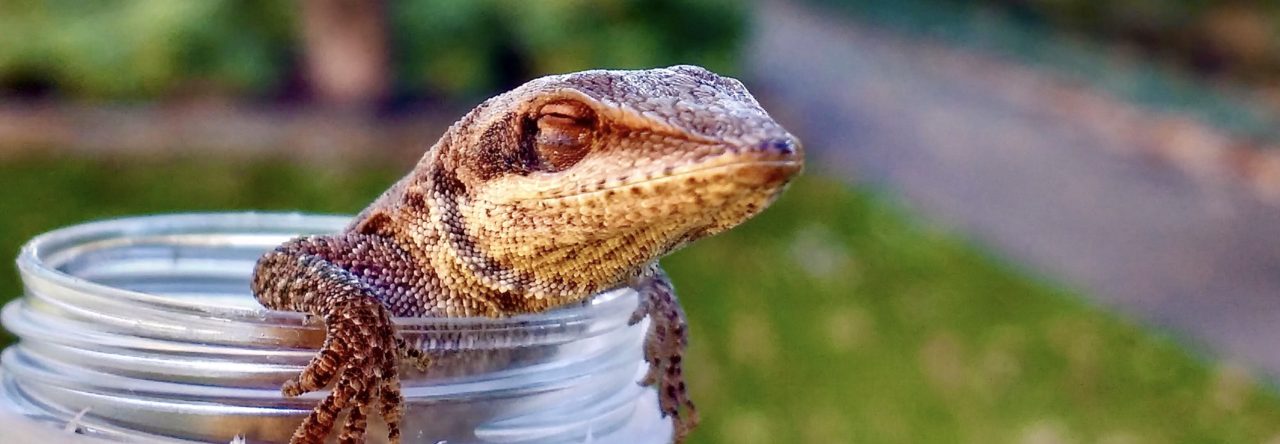Just back from a talk on primate color evolution. I was gratified to see that the opening slide of the talk included a picture of an anole—didn’t expect that in a monkey talk! However, the image used was the one above. Anole seminar aficionados know that this is a no-no—this image has been used in more talks than is humanly imaginable! The reason is simple: when you Google (or Google Image) Anolis, this image is one of the first couple that pop up. And it’s seemingly a nice picture, so people tend to use it. All the time. But look more closely. This guy is not the Adonnis of the anole world. Rather, his schnozz is very beat up. This fellow should not be the poster child for the anole world. I had always assumed that he was a captive animal, who had rubbed his snout raw against an aquarium wall, as often happens. However, the recent post on fighting A. carolinensis illustrates that perhaps this guy is a fighter, not a lover, and bears the scars of his battles. In any case, a word to the wise: use another anole photo in your presentations.
- Invasive Agama Decreases Number of Brown Anoles, Maybe Increases Disease Threat to Humans - March 9, 2025
- Green Anole Perches Near Ground to Take Advantage of a Mosquito Trap - February 26, 2025
- Third Mexican Amber Anolis Lizard Discovered - January 14, 2025



cybokat
“use another anole photo in your presentations”, and maybe also not one that shows the anole in weird brownish spottish stress colouration and is missing the right leg (which the photographer is using to hold the animal down).
marthamunoz
Along those lines, I’d like to add this photo of A. sagrei: http://commons.wikimedia.org/wiki/File:Anolis_sagrei_t%C3%AAte.JPG
It’s almost as common as the A. carolinensis pic and just as passe. Time for new pics.
Gregory C. Mayer
The injury is almost certainly due to fighting, not captivity. “Rubbed snout” in captive anoles usually appears as a swelling of the lip, especially the rostral, which may turn pinkish. This guy has tears and bleeding.